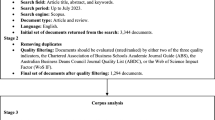Abstract
Using data from a study conducted in the Cranberry Wilderness Area of West Virginia, United States, this paper describes how a modified importance—performance approach can be used to prioritize wilderness indicators and determine how much change from the pristine is acceptable. The approach uses two key types of information: (1) indicator importance, or visitor opinion as to which wilderness indicators have the greatest influence on their experience, and (2) management performance, or the extent to which actual indicator conditions exceed or are within visitor expectations. Performance was represented by calculating indicator performance estimates (IPEs), as defined by standardized differences between actual conditions and visitor preferences for each indicator. The results for each indicator are then presented graphically on a four-quadrant matrix for objective interpretation. Each quadrant represents a management response: keep up the good work, concentrate here, low priority, or possible overkill. The technique allows managers to more systematically and effectively utilize information routinely collected during the limits of acceptable change wilderness planning process.
Similar content being viewed by others
Literature Cited
Hollenhorst, S., and L. Gardner. 1992. The indicator performance estimate (IPE) approach to defining acceptable conditions in wilderness. Social aspects of recreation research (SARR) conference. 21 February, Riverside, California.
Hollenhorst, S., D. Olson, and R. Fortney. 1992. Use of importance-performance analysis to evaluate state park cabins: The case of the West Virginia state park system.Journal of Park and Recreation Administration 10(1):1–11.
Martilla, J. A., and J. C. James. 1977. Importance-performance analysis.Journal of Marketing 41:77–79.
Martin, S. R. 1989. A framework for monitoring experiential conditions in wilderness. Pages 170–175 in D. W. Lime (ed.), Proceedings: Managing America's enduring wilderness resource: A conference. 11–17 September, 1989. Minneapolis, Minnesota.
Mengak, K., F. Dottavio, and J. O'Leary. 1986. Use of importance-performance analysis to evaluate a visitor center.Journal of Interpretation 11(2):1–13.
Merigliano, L. L. 1989. Indicators to monitor the wilderness recreation experience. Pages 156–162in D. W. Lime (ed.), Proceedings: Managing America's enduring wilderness resource: A conference. 11–17 September, 1989. Minneapolis, Minnesota.
Peterson, G. L. 1974. Evaluating the quality of the wilderness environment: Congruence between perception and aspiration.Environment and Behavior 6(2):169–193.
Roggenbuck, J. W., A. E. Watson, and D. R. Williams. 1993. Defining acceptable conditions in wilderness.Environmental Management 17(2):187–197.
Shelby, B., and J. J. Vaske. 1991. Using normative data to develop evaluative standards for resource management: a comment on three research papers.Journal of Leisure Research 23(2):173–187.
Shelby, B., J. J. Vaske, and R. Harris. 1988. User standards for ecological impacts at wilderness campsites.Journal of Leisure Research 20(3):245–256.
Stankey, G. L., D. N. Cole, R. N. Lucas, M. E. Peterson, and S. S. Frissell. 1985. The limits of acceptable change (LAC) system for wilderness planning. General technical report INT-176. USDA Forest Service, Ogden, Utah.
Author information
Authors and Affiliations
Additional information
This paper is submitted with the approval of the Director of the West Virginia Agricultural and Forestry Experiment Station as Scientific Article No. 541. The study was funded in part, through a grant from the USDA Forest Service, Monongahela National Forest.
Rights and permissions
About this article
Cite this article
Hollenhorst, S., Gardner, L. The indicator performance estimate approach to determining acceptable wilderness conditions. Environmental Management 18, 901–906 (1994). https://doi.org/10.1007/BF02393619
Issue Date:
DOI: https://doi.org/10.1007/BF02393619




